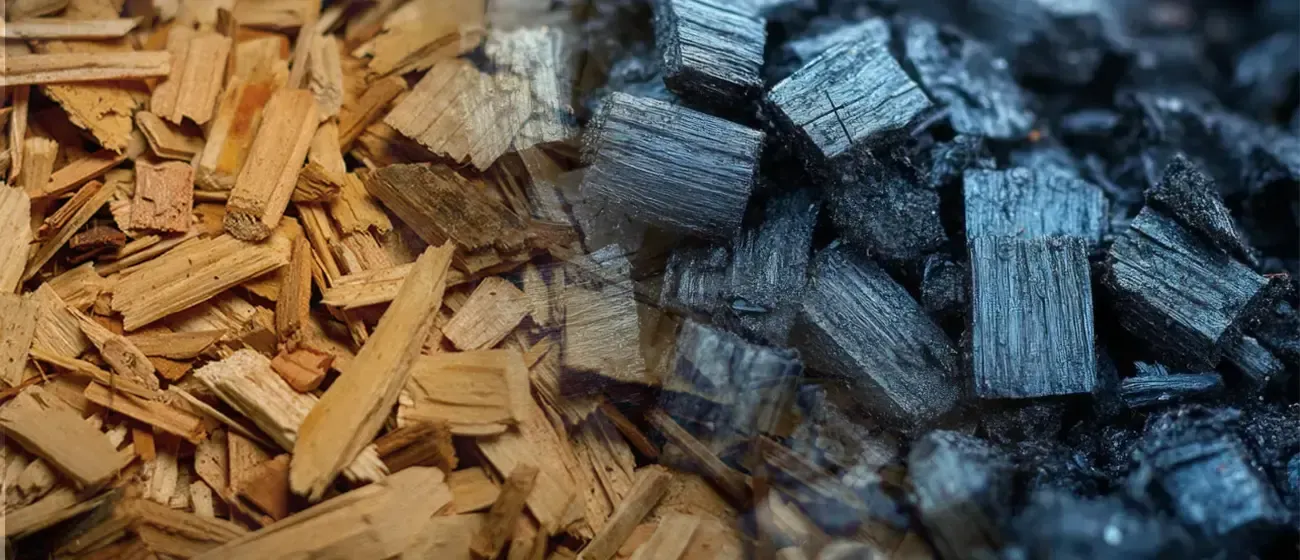Feedstock Characteristics for Biochar Production from Waste Wood
Waste wood—often viewed merely as construction debris, forestry residue, or discarded pallets—possesses intrinsic attributes that make it one of the most efficient inputs for engineered biochar production. Its lignocellulosic structure, relatively low ash content, and predictable moisture profile enable consistent thermochemical behavior. When processed in a modern pyrolysis plant, waste wood transitions from a bulky disposal liability into a high-purity carbon material with stable physical and chemical properties. This transformation highlights its suitability as a preferred feedstock in biochar manufacturing systems.
Structural Advantages of Lignocellulosic Biomass
The molecular composition of waste wood plays a decisive role in determining its biochar yield and stability. Wood contains three major biopolymers—cellulose, hemicellulose, and lignin—each decomposing at distinct temperature intervals.
- Cellulose contributes to volatile release, influencing pore formation.
- Hemicellulose decomposes quickly, affecting overall yield.
- Lignin, with its aromatic complexity, enhances char stability and fixed carbon content.
High lignin concentration in hardwood waste, such as oak or walnut, supports the formation of durable carbon matrices with superior adsorption and soil-ameliorating properties. Softwood waste, although lighter in density, offers quicker thermal degradation and reduced contamination risk. The versatility across wood types ensures reliable process control in any wood charcoal making machine configured for biochar output.

Low Contaminant Load and Reduced Pre-Treatment Requirements
Compared with agricultural residues, municipal solid waste, or sewage-derived biomass, waste wood presents significantly lower contamination risks. Metals, halogenated compounds, and synthetic polymers are rare in untreated wood streams. This characteristic minimizes the need for extensive pre-processing steps such as sorting, washing, or chemical stabilization.
Even recycled construction lumber, when screened for paint or adhesives, maintains a manageable impurity profile. Reduced contamination directly translates to lower emission burdens, less tar formation, and improved stability of the final biochar product. Such feedstock simplicity enhances throughput efficiency in continuous-feed biochar machine.
Moisture and Density Factors Supporting Thermal Uniformity
Biochar quality is heavily influenced by moisture content at the inlet stage. Waste wood typically has a moisture content between 15% and 25%, a range compatible with standard pyrolysis systems. This reduces the energy penalty associated with drying and promotes uniform thermal decomposition.
In addition, the relatively homogenous density and particle size of chipped waste wood facilitate predictable heat conduction. Stable thermal gradients ensure consistent carbonization, minimized hotspots, and reduced formation of incomplete char structures. These operational benefits make waste wood particularly suited to high-precision pyrolysis conditions.
Superior Biochar Properties Derived from Wood Feedstock
The morphology and surface chemistry of wood-based biochar support its broad applicability across environmental and industrial sectors. Wood biochar generally exhibits:
- High fixed carbon content
- Low ash concentration
- Elevated surface area and micro-porosity
- Reduced contaminant presence
- Stable aromatic carbon structures
These properties make it ideal for soil amendments, water filtration, carbon sequestration, and specialty uses such as composite filler materials. The intrinsically stable carbon backbone enhances long-term persistence in soil ecosystems, contributing to measurable climate-mitigation value.
Compatibility with Advanced Pyrolysis Technologies
Modern pyrolysis plant designs—whether batch, semi-continuous, or fully continuous—benefit from the predictable behavior of wood feedstock. Waste wood supports controlled pyrolysis kinetics, enabling fine-tuned temperature regimes and residence times. This compatibility translates to lower operational variability and reduced maintenance intervals.
Furthermore, wood-derived feedstock optimizes gas-phase combustion for internal heat recovery. Non-condensable gases generated during pyrolysis exhibit a balanced composition suitable for in-plant energy recirculation, reducing external fuel demands and improving system efficiency.
